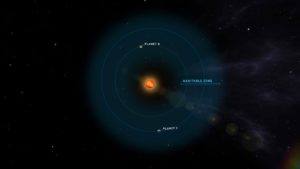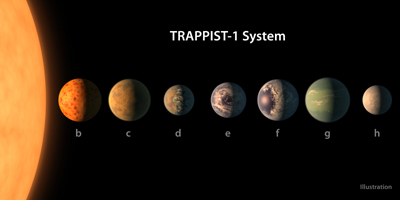Dec 10 2019
An Excess of Exoplanets
In the course of doing research and fact-checking for the imminent release of The Pavonis Insurgence and a new in-progress series (probably a trilogy) set in early T-Space (the same era as the Kakuloa series), I came across a recent, and fascinating, paper by a veritable laundry list of authors (Tuomi, et al.), titled “Frequency of planets orbiting M dwarfs in the Solar neighbourhood.”
M dwarfs, also called red dwarfs, are the most common type of star in our galaxy. The authors of the paper surveyed and analyzed data from many studies, covering 426 nearby stars and a total of 118 probable planets. They further analyzed this to come up with an average: an impressive 2.39 exoplanets per red dwarf, (although that could be (on average) anywhere from 1.03 to 6.97, again per star).
The numbers are probably different for different types of stars (like our own yellow G type), but my guess (and it is just a guess) is that the larger the star, the more planets it is likely to have, simply because there was more material in the original nebula. Now, that is complicated by gravitational effects of binary and multiple star systems, which tend to slingshot stuff out of the system, and with the formation of gas giants, which can do likewise. But still, we’re talking about averages.
Anyway, the paper got me thinking (always dangerous). At several cons now, I have given presentations that either briefly discussed exoplanets, or were entirely about exoplanets. Maybe I should write a book…. There are several books on exoplanets out there, but they are necessarily dated (it’s a rapidly changing field) and none (from what I’ve seen) target the audience I’m thinking of, most folks who want to know more about the science behind science fiction, both the readers and the writers. (For you astronomers out there, you’re not “most folks”, grin.)
Anyway, just a vague heads-up. No specific release plans yet, but I’m thinking summer of 2020, maybe around the time we start getting results from the CHEOPS bird (CHaracterising ExOPlanets Satellite) due to launch later this month. Meanwhile, I have science fiction books to finish.
Next time you look up at the stars at night (and for best results, do this away from the city where the skies are dark), consider that almost every one of those points of light has one or more planets orbiting it. Do you really think we’re alone?
Comments Off on An Excess of Exoplanets







